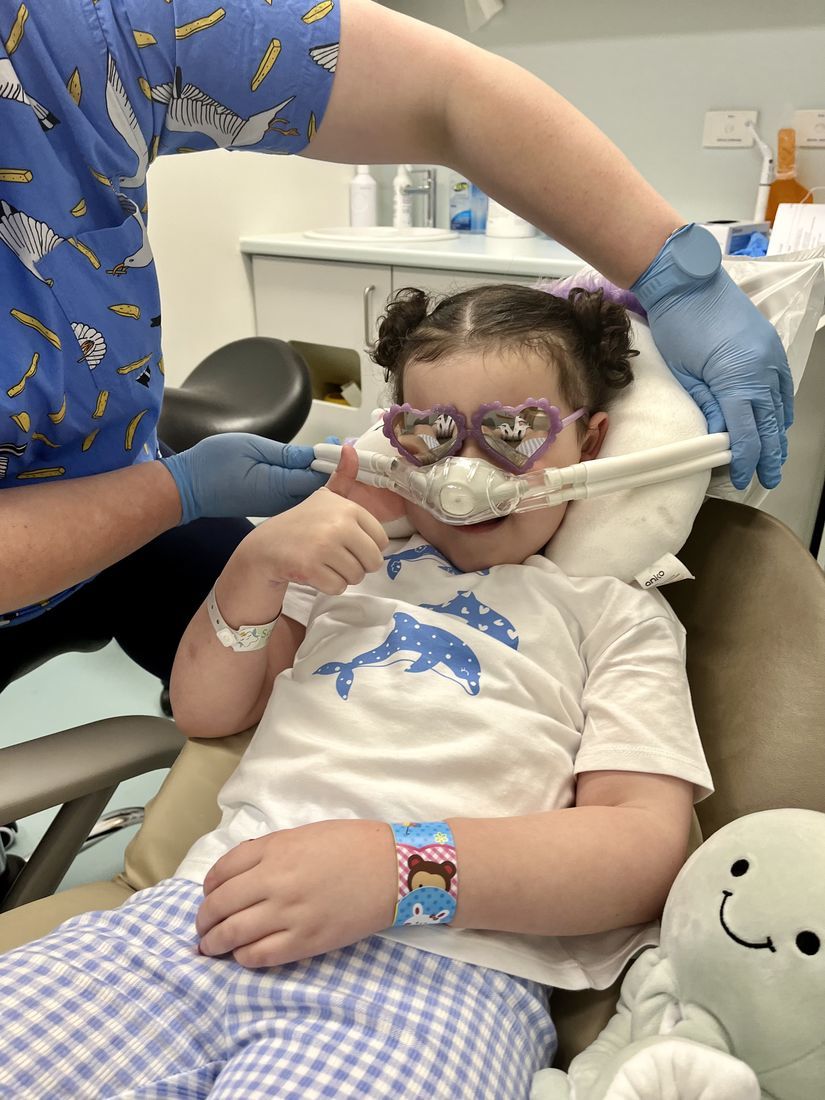Our Services
| We offer a comprehensive range of dental services for infants, children and adolescents, including those with medical conditions and/or special needs. Dental services include:
We specialise in managing complex cases such as children with severe decay affecting multiple teeth, those with significant behavioural issues and/or anxiety, and children with dental conditions such as supernumerary (extra) teeth, missing teeth, over-retained teeth or enamel defects (weak enamel). Dental treatment can be provided under ‘happy gas’ sedation or general anaesthesia. |  |
Relative Analgesia (Happy Gas) Sedation
"Happy Gas," or nitrous oxide, is commonly used in dental procedures for children to make the experience more comfortable and less stressful. Here’s why:
Anxiety ReductionNitrous oxide helps to calm children who might be anxious or scared about dental visits. It produces a relaxed, euphoric feeling that helps reduce fear and anxiety. | Pain ManagementWhile nitrous oxide isn’t a strong painkiller, it can help diminish the discomfort associated with dental procedures. When combined with local anaesthetics, it can make the procedure more comfortable for the child. | Conscious SedationUnlike general anaesthesia, nitrous oxide allows children to stay awake and responsive during the procedure. They remain conscious and can follow simple instructions, which is crucial for many dental procedures. |
Quick RecoveryThe effects of nitrous oxide wear off quickly once the gas is turned off. This means children can recover and return to their normal activities almost immediately after the procedure. | Safe and EffectiveWhen administered correctly, nitrous oxide is very safe. It’s been used in dentistry for many years with a good safety record. Its effects are easily controlled, and it’s suitable for children of various ages. | Overall, nitrous oxide makes dental visits more manageable and less traumatic for children, helping both the child and the dentist have a more positive experience. |
General Anaesthetic Procedures
General anaesthesia is sometimes used for children needing dental treatment in specific situations where other forms of sedation might not be suitable. Here’s why general anaesthesia might be chosen:
Complex ProceduresFor lengthy or particularly complex dental procedures, general anaesthesia ensures that the child remains completely still and unresponsive, which is crucial for the precision needed. | Severe Anxiety or FearSome children have intense fear or anxiety about dental procedures, which might make it impossible for them to cooperate even with sedation techniques like nitrous oxide. General anaesthesia allows the procedure to be performed without the child being aware of it. | Medical ConditionsChildren with certain medical or behavioural conditions might be unable to remain still or may not respond well to other forms of sedation. General anaesthesia can be a safer alternative in such cases. | Multiple ProceduresIf several dental procedures need to be done in one visit, general anaesthesia can be more practical. It allows for all necessary work to be completed at once, minimizing the need for multiple visits and reducing overall stress for the child. |
Inability to Use Local Anaesthesia EffectivelyIn some cases, local anaesthesia alone might not be sufficient to manage the child’s pain or discomfort, especially if the child’s anatomy or the nature of the procedure makes local anaesthesia less effective. | Medical NecessityIn rare instances, general anaesthesia is required due to the child’s specific medical condition or developmental needs. It might be used to ensure that the child is safely and effectively treated. | Safety and MonitoringWhile general anaesthesia is very safe when administered by trained professionals, it does carry more risks than local anaesthesia or sedation. The child will be closely monitored by an anaesthetist and recovery nursing staff with specialised training to ensure their safety throughout the procedure and recovery. | In summary, general anaesthesia is used in paediatric dentistry to address specific needs that cannot be met by other forms of sedation, ensuring that dental treatments are carried out effectively and with minimal distress for the child. |
